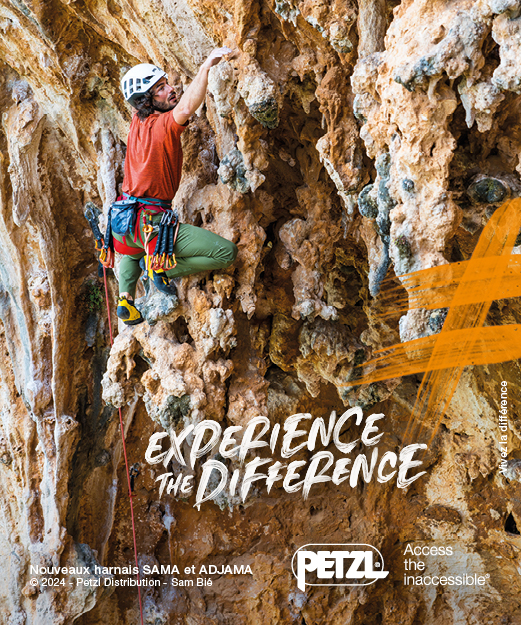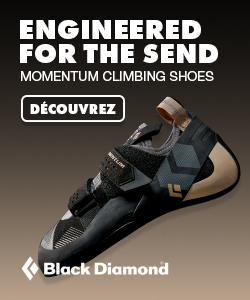Black Diamond Method S Climbing Shoe: The Solution for Bouldering?

Today, it can be said that climbing shoe manufacturers are getting closer and closer to the holy grail for every climber: offering models that combine performance and comfort. With the Method S, Black Diamond continues its exploration, and if we believe the shoe’s presentation on the website, the Method S, the latest addition to the lineup, has several features to boast: flexibility, sensitivity, comfort…
After testing the original Method, we were curious to see what the S version had to offer. Here is our experience with this climbing shoe.

The Method S
The Method S (S for Soft) is clearly designed to excel on steep terrain and provide comfort while bouldering, especially on modern competition-style routes. The designers started with a mold similar to that of the original Method. Those who are already familiar with this model won’t feel out of place. However, the final model clearly distinguishes itself from its predecessor, as some of the materials used are different, as well as the cuts and choices made for the rubber.

Materials and Design
The upper of the Method S is made of synthetic leather, while the upper part of the toe box (corresponding to the tongue) is made of elastic mesh. A significant portion of the top of the foot is covered by a textured rubber overlay.

The closure is done with a single Velcro strap. At this point, the designers had the excellent idea of extending the rubber overlay for toe hooks under the Velcro strap. This helps distribute pressure to a strategic area on the top of the foot. The compression on the dorsal artery of the foot is more evenly distributed, which reduces interference with blood circulation and preserves sensitivity.

For the sole, Black Label Fuse rubber is used, just like on the original Method, with a thickness of 3.75 mm. The heel is molded and similar to that of the Method.

The Method S has a horseshoe-shaped midsole, which could be described as minimalist. However, this choice is deliberate, as it aims to offer a highly flexible model.
Shape of the Method S
The Method S is slightly cambered and asymmetrical, with most of the pressure focused on the big toe. Black Diamond offers two volumes: those wanting a higher volume will choose the men’s model, while those with narrower feet will opt for the women’s model.

We tested the men’s model, and its overall volume suggests it’s more suitable for narrower feet. However, as we’ll discuss later, this aspect isn’t necessarily a drawback for climbers with a stronger instep.

Discovery of the Method S
An Aesthetic of Performance
Sleek, slim, and sleek silhouette. Choice of colors. The aesthetics associated with performance are clearly present. There is an aesthetic concern, even in extremely technical parts of the shoe. For instance, the texture of the materials used for the upper of the shoe, the rubber on the toe hook, and the mesh of the tongue caught my attention.

Putting on the Method S
It’s not often the case, but I had the opportunity to try several sizes before selecting the one for testing. I used the Method S in size 41.5, which is my street shoe size.
To be honest, when I first put my foot next to the shoe, I thought I would have trouble getting into it. The low volume of the toe box was particularly concerning.

However, it wasn’t as challenging as I expected, thanks to the materials used. In this regard, the Method lives up to its “S” designation. It’s a soft, flexible shoe that can stretch around your foot during the initial fit. The pressure is certainly quite strong in this climbing “sock,” but let’s not forget that this is a performance-oriented model.
In spite of my relatively wide foot, I didn’t feel any uncomfortable pressure points, and my foot quickly settled comfortably into the shoe.

Two notable features here: first, the rear pull tabs incorporate a microfiber section. It’s quite original but also convenient and comfortable. Second, the knitted mesh that forms the upper of the toe box. The mesh has various orientations, so it stretches adequately when you put on the shoe (though it’s important to handle it with some care, as it’s still a knit). However, once your foot is in the shoe, you won’t feel any loss of tension in this area. It’s a great compromise that enhances the overall snug fit of the Method S.

Usage
Compliance for Overhangs and Volumes
I started using the Method S on a steep, overhanging rock face, and then I tested it on plastic, bouldering, on various profiles.
I found that this model excelled in these environments. Its sensitivity in the toe, combined with its high flexibility, immediately instilled confidence on holds that required precise edging. Its ability to deform also made it easy to engage in smearing techniques on holds.

The initial impressions are that you have an extremely effective blend of flexibility and grip.
Of course, the softness of the rubber contributes to this, but the downside (as is often the case with very flexible models) is that it may wear relatively quickly. This is another reason to be even more meticulous with your footwork ;-).
Method S and Small Holds
Regarding holds on small features, it’s possible, thanks in part to the midsole. It allows for precise edging and increased sensitivity in the toes. However, it’s clear that the Method S is not the ideal choice for climbing vertical walls with tiny holds, unless you’re specifically looking to strengthen the muscles in your arch.
Heel Hooks
As I noted with the original Method, the heel of the Method S poses a minor challenge for me.

During heel hooks, I was somewhat hindered by the lack of flexibility in the rubber on the lower back part of the heel, which affected sensitivity. I also wasn’t a fan of the somewhat pronounced thickness in this area.
On the other hand, there are no complaints about the toe box: the front of the shoe is entirely covered in rubber, and it’s thin enough to provide a good feel for and location of holds!
In Summary
It’s undeniable that the Method S is a shoe that provides quick enjoyment. The cohesion with the foot and the excellent sensitivity of the toe make you feel confident almost immediately. One of its major strengths is that you can transition seamlessly from edging on steep overhangs to using large volumes, where you need to “smear” the shoe. It’s a great complement to the original Method!
Method S Limitations
- Challenging on micro-edges
- Lack of flexibility and sensitivity in the heel
Method S Advantages
- Sock-like fit of the upper
- Great sensitivity in the toe
- Flexibility








